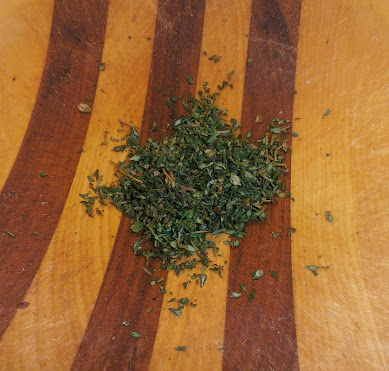I wanted to make a Pinedo recipe that used a different ingredient than the recipes I had been choosing. I know a local store that includes a butcher shop with high-quality items, so this recipe with tongue was a solid possibility. I was pleased to find tongue for sale in their store. The recipe is on page 146.
Marinated tongue.
(French style.)
Toast some
mulatto chiles that will be ground with garlic and oregano from Castilla [thyme]
Olive oil,
vinegar and butter are put in a saucepan. Then the chile is added, taking care
that it does not burn and has some broth left to serve it.
In this
marinade, put the cooked and sliced tongue.
I have not eaten tongue often, but a friend who lived on a cattle ranch would pressure cook one and share it with me occasionally. And once I had marinated tongue as an appetizer at a Basque restaurant. Both experiences were positive, so I wanted to try cooking tongue on my own.
My Redaction
3 pound cow's tongue, washed well
2 cups pinot noir wine
2 cups + 1/2 cup apple cider vinegar
6 cups water (or to cover)
2 ounces guajillo chiles, toasted, stemmed, seeded, and ground
5 cloves garlic, chopped
3 tablespoons fresh thyme, finely chopped
2 tablespoons butter
2 tablespoons olive oil
1/4 teaspoon salt
Place the tongue, wine, water, and 2 cups vinegar in a large pan. Bring liquid to a boil, lower to a simmer, and cook for 1 1/2 hours. Turn the tongue over and cook for another 1 1/2 hours.
While the tongue is cooking, toast the chiles, then grind them until mostly powdered. Finely chop the thyme. Chop the garlic cloves.
 |
| Chiles toasted, stemmed, and seeded |
 |
| Ground in a small coffee grinder. |
 |
| I used this much thyme. Consider using more. |
Put the chiles, thyme, and garlic into a sturdy bowl or mortar. Using a pestle or similar object, pound and mix the ingredients until they form a paste. Set it aside.
 |
| Chiles, garlic, and thyme, ready to be pounded. |
 |
| Pounded. The moisture from the garlic eventually made it a paste. |
When the tongue is cooked, remove it from the liquid and allow to cool just to the point where it is easy to handle. Pull the skin off and discard. (The internet tells me that if the tongue cools too much, it is hard to remove the skin.)
 |
| Barely cool enough. |
 |
| Skinned. |
If you need to let the tongue cool more, let it cool now. Then slice the meat very thin, cutting across the grain whenever you can.
In a saucepan or frying pan, melt the butter, then add the olive oil. Gently sauté about 2/3 of the chile paste along with the salt. When the garlic starts smelling very good, add 1/2 cup vinegar. Simmer for several minutes to blend the flavors, then add the tongue a few pieces at a time.
 |
| The sauce. |
When the pieces are heated through and coated with the marinade, remove to a platter. Repeat with the other pieces, however many you want to serve. (Three pounds is a lot! You might want to save some for later.)
The Verdict
My guest taster and I had the tongue as the main part of our meal -- we had some sourdough bread along side it and that was about all we ate. (There was the rest of the pinot noir, of course!)
We tried it "as is" and also on top of small pieces of bread. We compared its flavor to pieces of tongue that were warmed up without being in the sauce.
We liked it! The sauce was very strong in flavor -- mostly chiles and garlic, but the thyme did add a layer of flavor that was subtle, more like a background flavor. I think I would have liked to taste it more for balance, so if I did this again, I would perhaps double the amount of fresh thyme.
The tongue itself was mildly flavored. I couldn't really taste the wine and vinegar, but I'm pretty sure they made the meat better. Some parts of the tongue were chewy and some were more tender. I liked both, and so did my guest taster.
The tongue with the sauce was very good. The sauce added a kick and a depth to make the meat much more interesting. I thought eating it with a bite of bread was best because the bread added a tang that was different from the vinegar in the sauce. It also added a different texture that I felt on my tongue (as I was eating the tongue!).
My guest taster and I both felt the spiciness level was just right for us -- spicy from the chiles but not too much so. Any more and we would be distracted from the flavors of the meat and sauce. I gave some slices to another guest taster who wished it was spicier. As I have discovered, everyone has their own preference for the fire of chiles, so adjust your choices accordingly.
Success! We had more of it later on, reheated in the sauce, which was still good. Putting a few slices on a sandwich was also enjoyed. I recommend it heartily.
I'm not sure why Miss Pinedo called this "French style", as I would consider the use of chiles to be more Mexican in style. Perhaps it was wine and vinegar liquid for cooking the tongue? Or the use of garlic and thyme with the chiles. Still, the flavor combinations were just right.







No comments:
Post a Comment